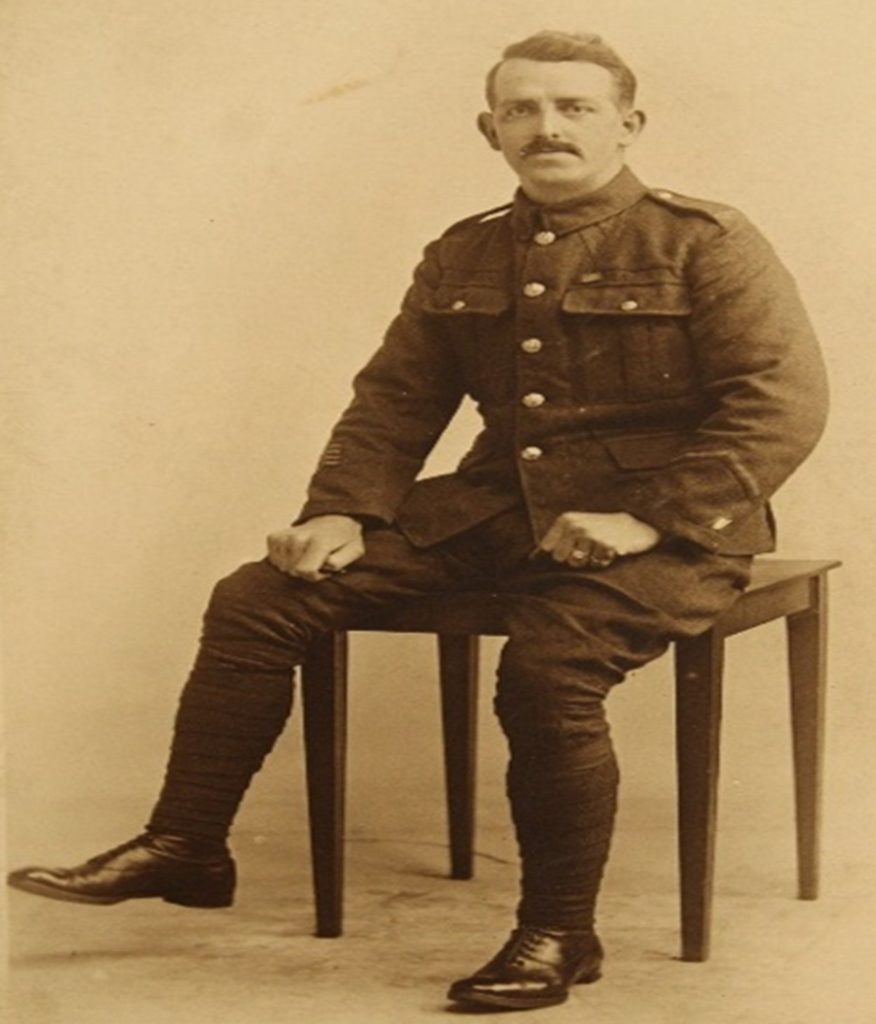
At the end of 2019, a First World War diary was donated to the archives at Edge Hill University which, unlike official war diaries, offered a rare and comprehensive insight into the emotions and experiences of one individual. The author, William Bradshaw was born in Preston on the 10th January 1884. After becoming a printer, he married Mary Ann Wright in 1909 and moved to Widnes where they had three children: Grace, Thomas, and Charles. Enlisting into the 4th Liverpool Pals in 1914, he started a diary which he then collated following the end of the war, alongside photographs of himself, his friends, and his battalion. Bradshaw included unique and interesting details about his time as a prisoner of war as well; at one point, he sells pieces of his uniform – his puttees – in order to acquire food to avoid going hungry. The accounts of his enlistment, training, and service in the army, allow us to challenge existing misconceptions about the First World War.
The annual sombreness of Remembrance Sunday, and the war’s portrayal in popular culture, has reinforced the general public’s perception that the British soldier was a victim of a meaningless war, which he was led into by incompetent leaders, and led within it by incompetent officers. This forms the basis of widely held narratives, of ‘lions led by donkeys’ and British troops ‘walking into machinegun-fire’, both notably popularised in Blackadder Goes Forth. The reality is that experiences of the war varied greatly depending on the individual soldier, where they served, and the different experiences they had; Lieutenant-General Adrian Carton de Wiart, for example, remarked in 1950 ‘frankly, I had enjoyed the war.’ It is therefore not desirable to outright refute the experiences of one individual or another, but to reassess the idea that these experiences of the war were universal. Using William Bradshaw’s experiences as evidence enables us to interrogate widely held perceptions, such as:–
- There was a universal wave of patriotism in Great Britain in 1914.
- The battle of the Somme was a complete failure due to poor British tactics.
Photographs of crowds outside Buckingham Palace and queues trailing from recruiting centres leave us with the impression that on the outbreak of war in 1914, a universal wave of patriotism swept through the nation. The historiography of the past decade, including works by Catriona Pennell (2012), has instead reasoned that this was not the case, and opposition to the war extended far beyond pacifist groups and conscientious objectors. Many towns across the country were apprehensive of war out of fear for the local and national economy, and the cities saw large anti-war demonstrations take place, such as those in Trafalgar Square just two days before Britain declared war. Even positive public sentiment was complex, and not generally based around anti-German jingoism but a carefully thought-out idea that to support the war would be the best thing to do in the circumstances. William’s reasoning for joining the army, for example, was based on the fact that his dependants would be financially better off due to a forced reduction in hours at the printers. He encountered two important figures on his way to enlist who may have seen themselves as having a duty of care and tried to stop him: his brother, and a policeman. The policeman ordered William back home to stay with his wife and children, rather than leave them and possibly get killed,
‘Get off back home again to your wife and kiddies and leave recruiting severely alone.’
His brother told him, ‘‘You deserve throwing through the window of the guard’s van for thinking of taking such an ignorant act.’
Therefore in 1914, it was not always patriotic zeal that drove men to enlist, personal circumstances also played an important part in this decision. The negativity William experienced in response to his desire to enlist also shows that the well-known ‘white feather’ had a societal adversary that sought to protect prospective soldiers from the horrors of war rather than label them as cowards.
The Battle of the Somme has garnered a reputation as one of the greatest military failures in British history, with soldiers being ordered to walk towards a hail of German machine-gun fire in an effort to capture enemy trenches. This does not, however, reflect reality. Robin Prior and Trevor Wilson have long refuted this, through a book published in 2006 which analysed the method of attack for eighty individual battalions which went ‘over the top’ on the 1st July 1916. The conclusion reached was that most units crept forward under the cover of darkness to await the signal, at which point they could leap straight into the German trenches; other units advanced under the cover of an artillery barrage. We can supplement these findings with the experiences of William Bradshaw, who remarked on the intensity of the proceeding artillery, and how he found the German lines in a state of ruin, with no defenders in sight to fight back against the initial attack. William further remarked that the real difficulty in an attack, was not in making progress capturing enemy territory, but attempting to hold the gains that had been made.
‘We went over the top on July 1st at 7:30 am after many days of terrific bombardment from the British and French gunners, and we found the Germen trenches practically levelled and deserted…’ – William Bradshaw
See https://archives.edgehill.ac.uk/records/BRAD for the full digitised diary.
Luke Blackburn
